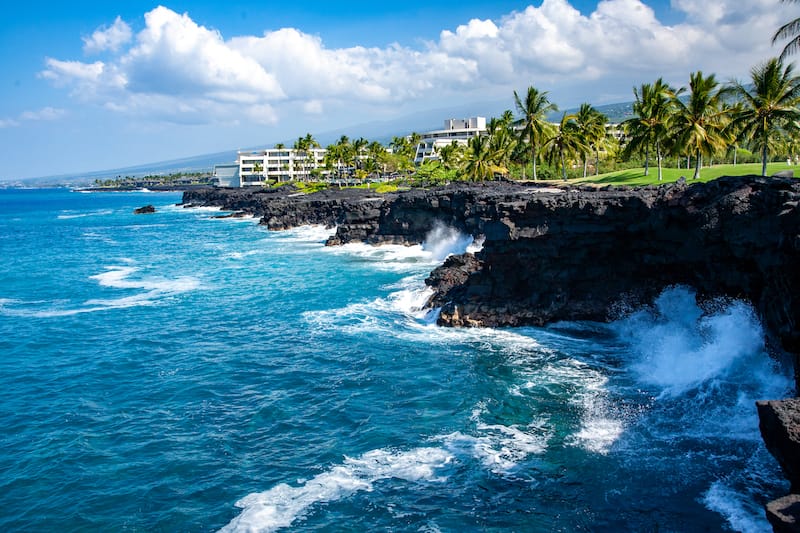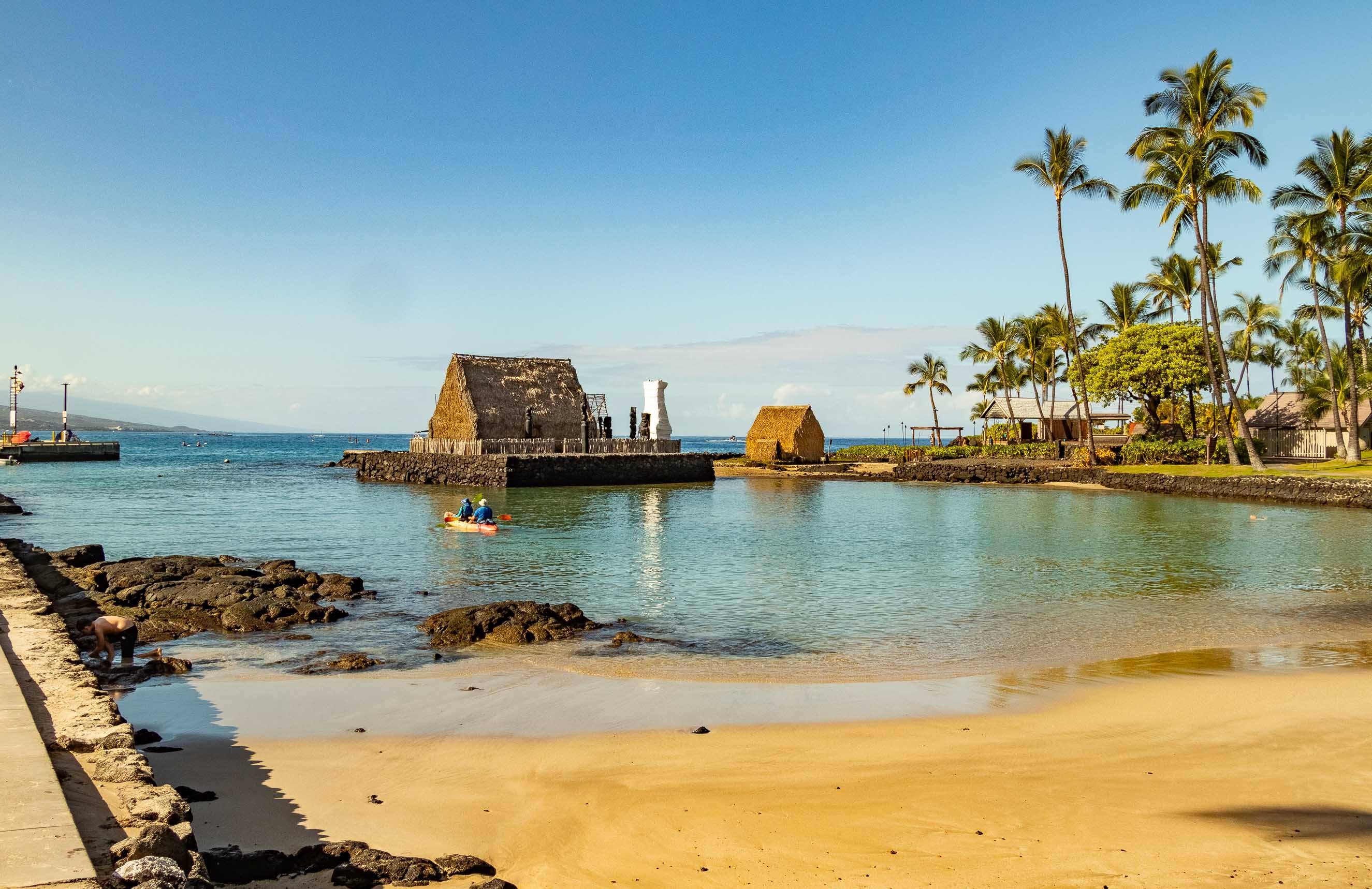Kona Island

Kona Island, a jewel in the Hawaiian archipelago, beckons with its unparalleled beauty and captivating allure. Nestled in the heart of the Pacific Ocean, this volcanic paradise boasts a rich tapestry of natural wonders, vibrant culture, and a captivating history.
Geography and Significance
Kona Island, situated on the western side of the Big Island of Hawaii, is a testament to the dynamic forces of nature. It’s one of the youngest islands in the Hawaiian chain, formed by volcanic eruptions over millions of years. The island’s dramatic landscape is characterized by towering volcanic peaks, including Mauna Loa and Kilauea, the world’s most active volcano. Kona’s location within the tropical Pacific Ocean ensures a warm, sunny climate, making it a year-round destination for travelers seeking sun, sand, and breathtaking scenery.
Ecosystem
Kona Island’s diverse ecosystem is a symphony of life, nurtured by its volcanic origins and the island’s unique geographical features. The island’s interior is home to lush rainforests, where towering trees create a verdant canopy, sheltering a myriad of native plants and animals. The slopes of the volcanoes are covered in coffee plantations, their dark green leaves contrasting with the vibrant red of coffee berries. The island’s coastline is a haven for marine life, with coral reefs teeming with colorful fish, sea turtles, and other marine creatures.
History and Culture
Kona Island’s history is intertwined with the ancient traditions of the Hawaiian people. For centuries, the island was a thriving center of Hawaiian culture, with a rich legacy of storytelling, music, and dance. The island’s name, “Kona,” derives from the Hawaiian word “konane,” which means “leeward” or “downwind.” This refers to the island’s location on the leeward side of the Big Island, where the prevailing trade winds bring dry, sunny conditions.
Ancient Hawaiian Traditions
The ancient Hawaiians revered the natural world and believed that the gods resided in the mountains, the forests, and the sea. Kona Island was home to several important cultural sites, including ancient temples, burial grounds, and fishponds. The island’s volcanic landscape played a significant role in Hawaiian mythology, with legends of Pele, the goddess of fire, and her volcanic eruptions.
Modern-Day Influences, Kona island
Today, Kona Island is a vibrant blend of traditional Hawaiian culture and modern-day influences. The island’s economy is heavily reliant on tourism, with visitors from around the world drawn to its natural beauty, cultural attractions, and world-renowned coffee. The island’s agricultural sector is also thriving, with coffee, macadamia nuts, and other crops being exported worldwide.
Exploring Kona’s Attractions

Kona Island, nestled within the embrace of the Pacific Ocean, offers a vibrant tapestry of natural wonders and cultural experiences. From the azure waters of Kealakekua Bay to the verdant slopes of the Kona Coffee Belt, the island beckons with a captivating blend of beauty, history, and adventure.
Kealakekua Bay: A Historic Sanctuary
Kealakekua Bay, a picturesque haven on Kona’s western coast, holds a profound historical significance. It was here, in 1778, that Captain James Cook first landed in Hawaii, marking a pivotal moment in the island’s history. Today, the bay stands as a testament to this encounter, with a monument commemorating Cook’s arrival and a vibrant marine ecosystem teeming with diverse marine life. The bay is a popular destination for snorkeling, diving, and kayaking, offering a glimpse into the underwater wonders of the Pacific.
The Kona Coffee Belt: A Taste of Paradise
The Kona Coffee Belt, a fertile stretch of land along Kona’s western slopes, is renowned for its exceptional coffee beans. The unique volcanic soil, abundant rainfall, and ideal growing conditions contribute to the distinctive flavor and aroma of Kona coffee. Visitors can explore the region’s coffee plantations, witnessing the meticulous process from bean to cup. The Kona Coffee Belt also boasts scenic hiking trails and charming towns, offering a glimpse into the island’s agricultural heritage.
Pu’uhonua o Honaunau National Historical Park: A Refuge of the Past
Pu’uhonua o Honaunau National Historical Park, located on the island’s southern coast, is a testament to Hawaii’s rich cultural heritage. This sacred site, once a place of refuge for those who had broken the kapu (ancient laws), offers a glimpse into the island’s ancient traditions and beliefs. Visitors can explore the park’s ancient temples, petroglyphs, and burial grounds, immersing themselves in the island’s history and spirituality.
Exploring Kona’s Diverse Activities
Kona Island caters to a wide range of interests, offering a diverse array of activities to suit every taste.
Water Activities
- Snorkeling and Diving: Kona’s crystal-clear waters offer unparalleled opportunities for snorkeling and diving. The island boasts vibrant coral reefs teeming with colorful fish, sea turtles, and other marine life. Popular snorkeling spots include Kealakekua Bay, Captain Cook Monument, and Honokohau Harbor.
- Whale Watching: From December to May, humpback whales migrate to the warm waters of Hawaii, creating an unforgettable spectacle. Kona offers various whale-watching tours, providing opportunities to witness these majestic creatures breaching, singing, and frolicking in the ocean.
- Fishing: Kona is a renowned fishing destination, offering opportunities to catch marlin, tuna, mahi-mahi, and other prized species. The island’s deep waters and diverse marine life make it a paradise for anglers.
Land Activities
- Hiking: Kona Island boasts a network of hiking trails, ranging from easy strolls to challenging climbs. Popular trails include the Kealakekua Bay Trail, the Captain Cook Monument Trail, and the Pu’uhonua o Honaunau Trail. These trails offer breathtaking views of the coastline, volcanic landscapes, and lush forests.
- Cycling: Kona’s scenic roads and rolling hills provide an ideal setting for cycling. The island’s diverse terrain offers options for both leisurely rides and challenging climbs. Popular cycling routes include the Kona Coffee Belt, the Queen K Highway, and the Mamalahoa Highway.
- Golf: Kona Island features several world-class golf courses, offering breathtaking ocean views and challenging play. The island’s mild climate allows for year-round golfing, making it a popular destination for golf enthusiasts.
Cultural Experiences
- Cultural Tours: Kona Island offers various cultural tours, providing insights into the island’s history, traditions, and beliefs. These tours may include visits to historical sites, traditional Hawaiian music and dance performances, and demonstrations of ancient crafts.
- Hawaiian Luau: A Hawaiian luau is a feast for the senses, featuring traditional Hawaiian food, music, and dance. These events offer a glimpse into the island’s vibrant culture and hospitality.
- Museums and Galleries: Kona Island boasts several museums and galleries, showcasing the island’s art, history, and culture. The Kona Historical Society Museum, the Pu’uhonua o Honaunau National Historical Park Museum, and the Kona Coffee Living History Farm offer insights into the island’s rich past.
Unveiling Kona’s Essence: Kona Island

Kona Island, a gem in the Pacific, offers a diverse tapestry of experiences, each region painting its own unique story. From the vibrant shores of the North Kona Coast to the tranquil beauty of the South Kona Coast, and the aromatic allure of the Kona Coffee Belt, Kona’s essence unfolds through its distinct landscapes, activities, and cultural expressions.
Exploring Kona’s Regions
Kona Island’s diverse regions offer distinct experiences for every traveler.
- North Kona Coast: This region is a haven for beach lovers, offering stunning white-sand beaches like Hapuna Beach State Recreation Area and Kahalu’u Beach Park, known for its calm waters perfect for snorkeling and swimming. The bustling town of Kailua-Kona, the island’s largest, is a vibrant hub for shopping, dining, and exploring local history and culture.
- South Kona Coast: Known for its rugged beauty, the South Kona Coast boasts dramatic volcanic landscapes, secluded beaches, and lush rainforests. Kealakekua Bay, a historical landmark where Captain Cook first landed in Hawaii, offers breathtaking views and opportunities for kayaking, paddleboarding, and dolphin watching. The region also features the Kealakekua Bay State Historical Park, a sanctuary for marine life and a glimpse into Hawaii’s rich history.
- Kona Coffee Belt: This fertile region, nestled on the slopes of Mauna Loa, is renowned for its world-famous Kona coffee. Take a tour of a coffee plantation, witness the intricate process of coffee cultivation, and savor the rich aroma and distinctive flavor of Kona coffee. The region also offers breathtaking views of the coastline and opportunities for hiking and exploring volcanic landscapes.
A Week-Long Itinerary for Kona Island
Here’s a suggested itinerary for a week-long vacation on Kona Island, capturing the essence of each region.
- Day 1-2: North Kona Coast – Beach Bliss and Cultural Immersion:
- Settle into a beachfront hotel in Kailua-Kona, immersing yourself in the island’s vibrant atmosphere.
- Explore the historic Kailua Pier, a landmark dating back to the 19th century, offering stunning views and opportunities for fishing.
- Visit the Kona Historical Society Museum to delve into the island’s rich past and learn about its unique culture.
- Spend an afternoon at Hapuna Beach State Recreation Area, enjoying the soft white sand and crystal-clear waters.
- Indulge in a traditional Hawaiian luau, experiencing the island’s vibrant culture through music, dance, and delicious cuisine.
- Day 3-4: South Kona Coast – Adventure and Serenity:
- Embark on a scenic drive along the South Kona Coast, marveling at the rugged volcanic landscapes and lush rainforests.
- Explore Kealakekua Bay, kayaking or paddleboarding amidst the calm waters, keeping an eye out for playful dolphins.
- Visit the Kealakekua Bay State Historical Park, learning about Captain Cook’s first landing in Hawaii and the significance of this historical site.
- Hike through the lush rainforests of the South Kona Coast, encountering diverse flora and fauna, including endemic Hawaiian birds.
- Relax on the secluded beaches of the South Kona Coast, enjoying the tranquility and stunning views of the Pacific Ocean.
- Day 5-7: Kona Coffee Belt – Aromatic Delights and Volcanic Wonders:
- Immerse yourself in the rich history and tradition of Kona coffee by visiting a coffee plantation and learning about the intricate process of coffee cultivation.
- Sample the diverse flavors of Kona coffee at a local coffee shop, appreciating the unique characteristics of this world-renowned beverage.
- Hike through the volcanic landscapes of the Kona Coffee Belt, enjoying breathtaking views of the coastline and the majestic Mauna Loa.
- Explore the quaint towns of Holualoa and Kailua-Kona, discovering local art galleries, boutiques, and charming cafes.
- Indulge in a sunset cruise along the Kona Coast, savoring the beauty of the island’s dramatic landscapes as the sun dips below the horizon.
Kona’s Cultural Tapestry
Kona Island’s culture is a vibrant blend of Polynesian heritage, Hawaiian traditions, and modern influences.
- Hawaiian Traditions: Kona Island is steeped in Hawaiian traditions, from the ancient art of hula dancing to the significance of the ‘ohana (family) and the importance of aloha (love and respect). Experience these traditions through local cultural performances, workshops, and interactions with the island’s friendly locals.
- Artistic Expressions: Kona Island boasts a thriving arts scene, with galleries showcasing local artists’ works in various mediums, including painting, sculpture, and photography. Explore the island’s artistic landscape by visiting art galleries, studios, and local markets.
- Local Customs: Kona Island’s customs reflect its deep respect for the land and its people. Embrace the island’s ‘slow pace’ and ‘island time,’ appreciating the importance of connection, community, and the natural world.
Kona Island, a paradise in the Pacific, beckons travelers with its volcanic landscapes, pristine beaches, and vibrant culture. But before you can soak up the Hawaiian sun, you might be wondering, “What terminal is Alaska Airlines at JFK?” This link can help you navigate your way to the right gate.
Once you’ve landed, Kona Island’s allure will enchant you with its unique blend of relaxation and adventure.
Kona Island, with its volcanic landscapes and rich coffee plantations, is a paradise for adventurous souls. If you’re planning a trip to this Hawaiian gem, keep an eye out for special deals like Alaska Airlines’ buy one get one offers , which can help you stretch your travel budget.
These deals can make a Kona Island vacation even more affordable, leaving you with extra cash to indulge in the local cuisine and explore the island’s hidden gems.
